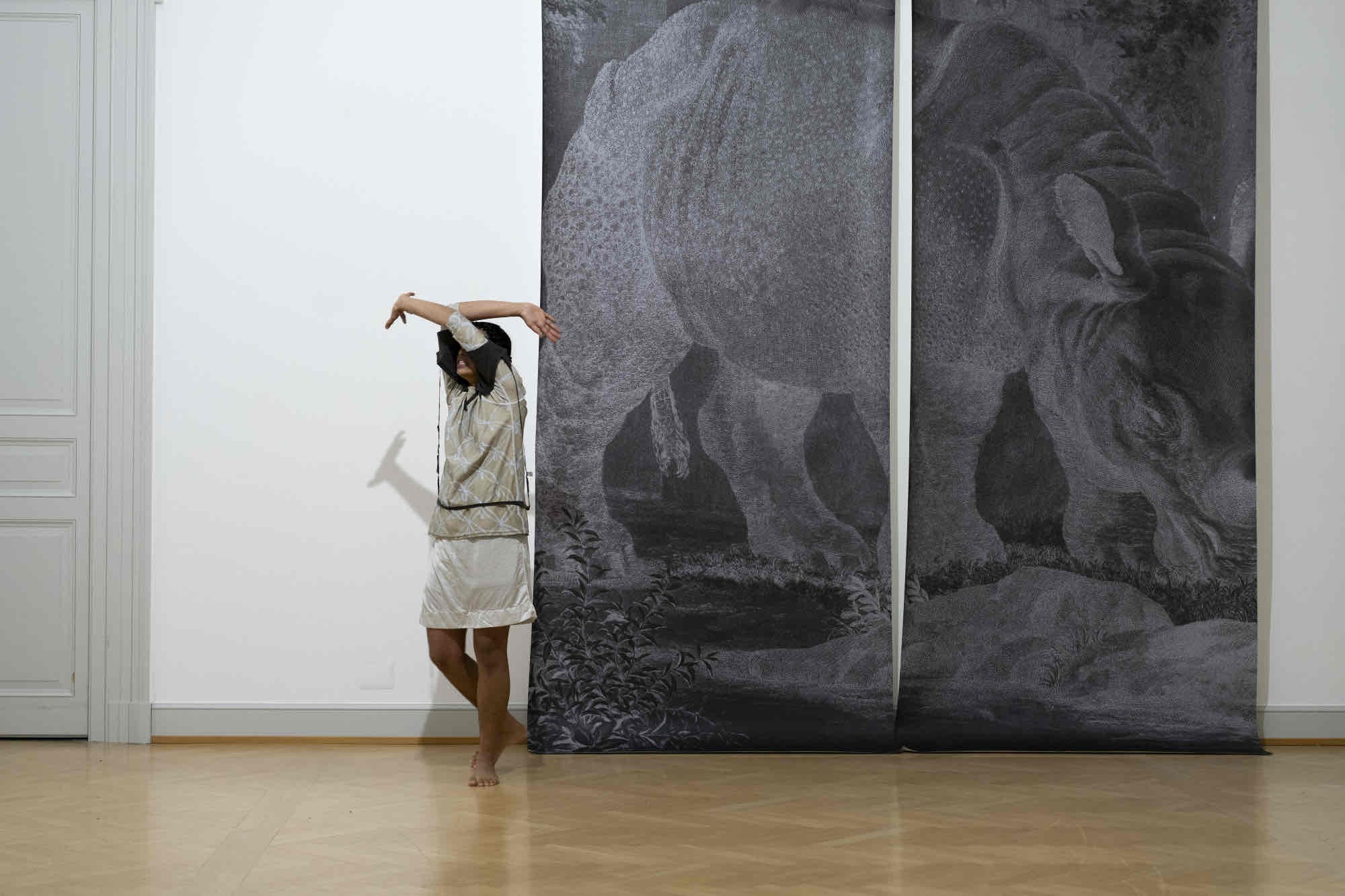Juliette Uzor
(ah ah ah)
25 Nov 2023 - 11 Feb 2024

Juliette Uzor, (ah ah ah), Manor Kunstpreis St.Gallen 2023, Installationsansicht Kunstmuseum St.Gallen, Foto: Brigham Baker

Juliette Uzor, (ah ah ah), Manor Kunstpreis St.Gallen 2023, Performance und Installationsansicht Kunstmuseum St.Gallen, Foto: Brigham Baker

Juliette Uzor, (ah ah ah), Manor Kunstpreis St.Gallen 2023, Installationsansicht Kunstmuseum St.Gallen, Foto: Brigham Baker

Juliette Uzor, (ah ah ah), Manor Kunstpreis St.Gallen 2023, Installationsansicht Kunstmuseum St.Gallen, Foto: Brigham Baker

Juliette Uzor, (ah ah ah), Manor Kunstpreis St.Gallen 2023, Performance und Installationsansicht Kunstmuseum St.Gallen, Foto: Brigham Baker
The performance artist and dancer Juliette Uzor (*1992) is the winner of the Manor Art Prize St.Gallen 2023. For her first solo exhibition at Kunstmuseum St.Gallen she has created a new performance using the exhibition space as a stage. Based on the essay Über das Marionettentheater, by the German writer Heinrich von Kleist, Uzor has arranged the choreography and designed a wallpaper to cover the walls. The wallpaper creates the setting for her performances and also functions as an installation in its own right. The exhibition is activated by Uzor’s choreography and the performers.
Juliette Uzor draws on the publication Albinus on Anatomy for the spatial staging of her installation Kulisse (Corporate Fantasy). The work combines plates from the volume Tabulae Sceleti et Musculorum Corporis Humani (Tables of the Skeleton and Muscles of the Human Body), first published in 1747. The engravings contained in this volume depict precise anatomical representations of the human body, the skeleton and muscle structure. The Dutch engraver Jan Wandelaar (Amsterdam 1690-1759 Leiden) produced these drawings. He was commissioned by the scientist Bernhard Siegfried Albinus (Frankfurt 1697-1770 Leiden), who is still regarded as one of the greatest descriptive anatomists of the 18th century. The engravings were used to teach anatomy and to provide an understanding of the ideal human (male) body.
Uzor uses the illustrations as the starting point for her installation, with paper panels that serve as the backdrop for the performance (ah ah ah). The depicted bodies were retouched out of the historical panels, leaving only the staged background: an Arcadian and sometimes exoticized landscape. By omitting the anatomical studies, background elements within the fantastic scenery move to the foreground: architectural features, a floating angel, or a rhinoceros. In addition to this backdrop, the installation is comprised of lights, a glass-bead curtain and a glass-bead garland, costumes, a water dispenser and wall text, which provide points of reference for the performance.
Juliette Uzor draws on the publication Albinus on Anatomy for the spatial staging of her installation Kulisse (Corporate Fantasy). The work combines plates from the volume Tabulae Sceleti et Musculorum Corporis Humani (Tables of the Skeleton and Muscles of the Human Body), first published in 1747. The engravings contained in this volume depict precise anatomical representations of the human body, the skeleton and muscle structure. The Dutch engraver Jan Wandelaar (Amsterdam 1690-1759 Leiden) produced these drawings. He was commissioned by the scientist Bernhard Siegfried Albinus (Frankfurt 1697-1770 Leiden), who is still regarded as one of the greatest descriptive anatomists of the 18th century. The engravings were used to teach anatomy and to provide an understanding of the ideal human (male) body.
Uzor uses the illustrations as the starting point for her installation, with paper panels that serve as the backdrop for the performance (ah ah ah). The depicted bodies were retouched out of the historical panels, leaving only the staged background: an Arcadian and sometimes exoticized landscape. By omitting the anatomical studies, background elements within the fantastic scenery move to the foreground: architectural features, a floating angel, or a rhinoceros. In addition to this backdrop, the installation is comprised of lights, a glass-bead curtain and a glass-bead garland, costumes, a water dispenser and wall text, which provide points of reference for the performance.
